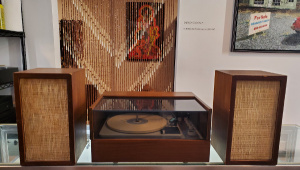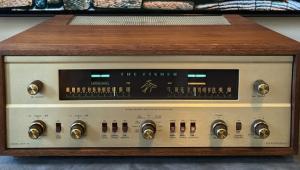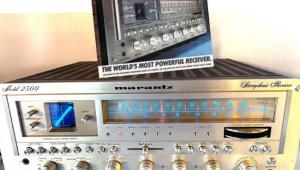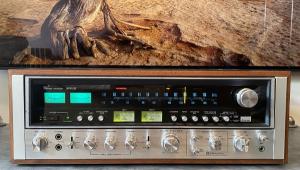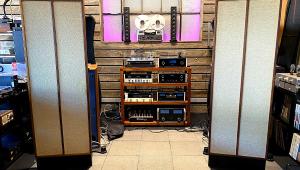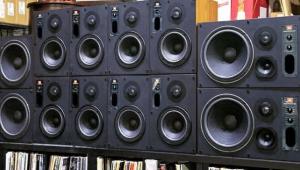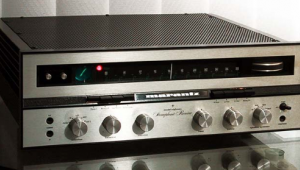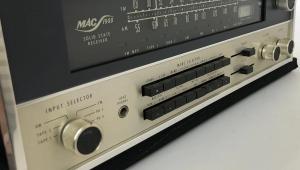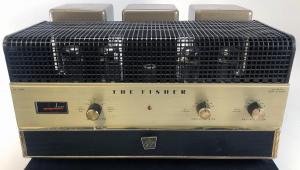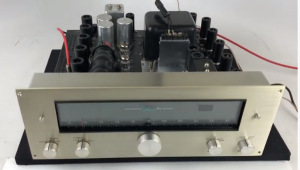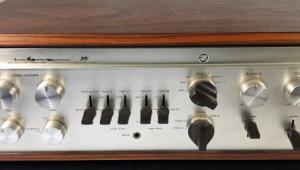There was no way I could afford any Nakamichi cassette deck in the 70's but I did have a DBX Expander/Compactor (and still have it!) to go with my TEAC (later replaced by a Sony) cassette deck. The DBX compacted the signal to noise ratio to fit onto the cassette tape and then on playback expanded the signal back to the original. I used this to make mix tapes from vinyl and reel to reel tapes and the playback sound was as good as the original. I later bought a cassette deck with dbx built in but it didn't work as well as my original standalone DBX.
Vintage Test Report: Nakamichi Dragon Cassette Deck
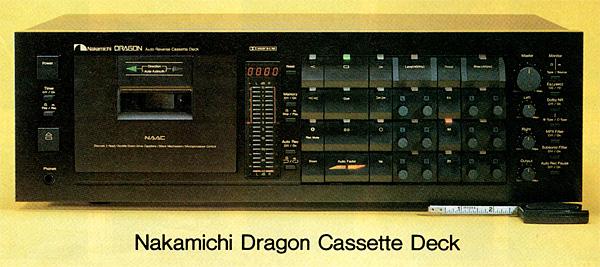
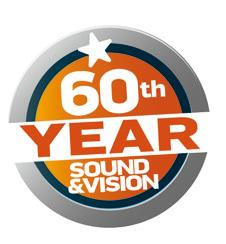 Introduction, September 2018
Introduction, September 2018
If you were an audiophile in the late 1970s or early 1980s-or just a teenager with a fresh driver's license-the Compact Cassette was integral to your life. While reel-to-reel magnetic tape introduced the concept of the “mixtape” decades earlier, it was not until the cassette's launch by Philips in 1963 and its later adoption in automobile decks and portables in the 1970s that music lovers got the ability to create personal playlists and take them to-go in a convenient, pocket-friendly format.
But eeking out high-fidelity from a design that traded a consumer reel-to-reel's ¼-inch wide tape and typically 7-1/2 inch-per-second maximum speed for a 0.15-inch strip running at a meager 1-7/8 inches per second was not without challenges. Dolby B noise reduction, released in 1971 in Advent's Model 201 cassette deck, was a step in the right direction, as was the introduction of three-head decks with dedicated heads for erase, recording, and playback. Dual-capstan decks reduced speed variations by grabbing the tape on both the feed and take-up sides of the head cluster. Eventually, new metal tape formulations further improved performance. Still, serious hurdles remained. Notably, the small size and physics of the cassette calls for near-perfect alignment of the vertical gap in the playback head across the width of the tape. Any minor variance from perpendicularity results in a potentially dramatic loss of high frequencies. To make matters worse, the ideal cassette deck needs to retain that “azimuth” alignment even after the tape is turned over or the tape direction reversed (and/or the head flipped) for playing of the B-side. Furthermore, minor azimuth differences between the angle of the play head and that of the original recording deck (a given with prerecorded cassettes) undermines any attempt to tune the deck for perfect repeatability.
Fortunately for audiophiles, these and other obstacles indigenous to the cassette became a source of fascination for Niro Nakamichi. The company bearing his name was founded by his brother Esturo in 1948 as a research outfit before it veered into reel-to-reel tape deck design in the 1950s. But it was Niro who later took over and gave the firm its greatest fame as provider of the world's finest (and most expensive) cassette decks. Among these, none was as heralded or lusted after as the Nakamichi Dragon.
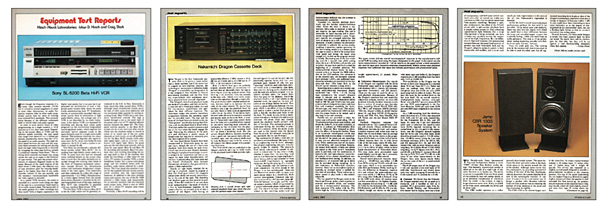
Although the deck integrated several prior Nakamichi advances, what came together in 1982 in the $1,850 Dragon (later repriced to $2,499) was nothing short of an engineering marvel. Among its features was a beltless and springless dual-capstan transport with direct-drive motors controlled to remarkable accuracy by a quartz clock; the mechanism intentionally pushed away the cassette's troublesome, built-in pressure pad (normally intended to improve tape-to-head contact) and relied solely on the motors to provide the desired pressure. In Stereo Review's April 1983 review, written by Craig Stark of Starksonic Studio (who had by then taken over tape deck reviews to ease Julian Hirsch's burden) and reproduced here, the Dragon's measurements revealed the lowest wow-and-flutter of any cassette deck ever tested. But, as you'll read, its biggest breakthrough was the inclusion of Nakamichi Auto Azimuth Correction (NAAC), a microprocessor-driven system that used a cleverly-designed feedback loop to detect azimuth error in real time and physically correct it with a servo-controlled head, thus ensuring perfect alignment even with prerecorded tapes!
Fairly quickly, the complex and costly mechanics of NAAC technology and the difficulty of servicing these auto-reverse machines caused Nakamichi to abandon it in its RX series of UDAR (Uni-Directional Auto Reverse) decks, which mechanically flipped the cassette to best maintain azimuth accuracy. But the Dragon held on, finally exiting the market in 1993 after an 11-year run. Nonetheless, with the rapid advance of the Compact Disc in the late 1980s and early 1990s, the demand for Nakamichi's cassette decks waned, and the new digital audio tape (DAT) format it banked its future on failed to gain traction with consumers. The company eventually lost its financial footing and disappeared. After years of dormancy, the brand is now controlled by Grande Holdings, a Chinese firm based in Hong Kong that offers the Nakamichi Shockwafe series of high-performing soundbars and other lifestyle electronics. -Rob Sabin
- Log in or register to post comments


Many people don't know that Nakamichi built the Advent before they debuted their own brand deck.
For those who don't understand how "motors provided the needed pressure" for tape to head contact, it was capstan/pinch roller assemblies, one on either side of the head block, that isolated the tape from the rather unreliable specifications of the cassette shell.
As far as auto-reverse, UDAR was simply a way to provide high quality auto reverse at a lower price. It should be noted, that UDAR would only provide 100% azimuth alignment for tapes recorded on that machine. The Dragon would optimize alignment, in both directions, regardless of where the tape was recorded.
Moving into the 80's we sold good quality Nakamichi single capstan, two head decks for as little as $300. I've always bemoaned their demise, which seemed to be accelerated by their attempts at "Lifestyle" systems, the SoundSpace series.

I loved my ZX7 cassette deck, which provided most of the useful features of the Dragon. I also loved the Nakamichi Dragon turntable, which used a laser measure the exact center of the record and then moved the record around to compensate for off-center record holes.

Children might devise various situations and solutions during their play, fostering critical thinking and problem-solving skills https://topplayguns.com/top-10-realistic-guns/.
